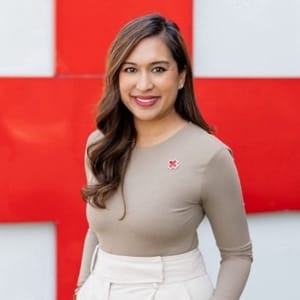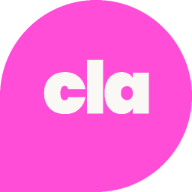Community can be an incredibly powerful tool for growth, but only when the right amount of time, dedication, and resources are devoted to it.
It’s equally important to approach it with the right intentions and to first determine whether community-led growth is the right fit for your business.
In this article, I’ll share insights from my experience as Head of Community at Gong. From my role and responsibilities, to the key skills I believe are essential for success, and the value that community brings to a business.
I’ll also reflect on the mistakes I’ve made along the way, the incredible communities and leaders I admire, and the advice I’d give to anyone looking to succeed in this field.
So, let’s dive in!
(This article is based on a podcast episode, you can listen to the full interview in audio form!)
My role as head of community at Gong
As the Head of Community, it's my responsibility to unlock the excitement and creativity of our customers. These customers have an appetite for learning from each other, connecting, sharing their best practices, and learning from others’ best practices.
I basically built the Gong community, which is an online platform for people to learn from each other and get connected in an organic way.
Finding my passion for building communities
I graduated with a degree in marketing, which led me to start my career working in a marketing role at a small startup.
Around the same time, I was also running a community meetup group on the side, purely for fun. This meetup was designed for startup founders who had built their companies and needed a space to get feedback before launching.
It was a way for them to connect and exchange ideas long before events like TechCrunch, Disrupt, or Demo Day became popular. Back then, people met in person to network and share insights.
While running this meetup, someone from Microsoft approached me and said, "Did you know that you could do this as a full-time job?" That moment was eye-opening for me. I had no idea that building community could be a formal career path or that companies actively sought to create these kinds of spaces.
To me, community had always been more of a passion project, something I did because I loved bringing people together, not one of the traditional customer marketing channels we learned about in school.
Now, after over a decade in this industry, I realize that community spans across every business function and industry. It impacts everyone, whether they recognize it or not. I feel incredibly grateful to have the opportunity to do this work professionally.
Throughout my career, whether at Salesforce, Microsoft, Facebook, or smaller companies, I’ve always integrated community into every role. It’s a fundamental part of how I approach my work and connect with people.
Building community at Gong
At Gong, no two days are the same—there's always a lot to do.
A big part of my day-to-day involves ensuring that we have a constant stream of authentic content. We launched a campaign where customers could meet our CEO and Head of Content for 30 minutes if they shared their own insights on how they use Gong and how it's improved their roles. The response was amazing.
Our most passionate customers, what we affectionately call “Gong nerds,” jumped at the opportunity to share their stories. They love talking about how Gong has impacted their careers, improved their workflows, and made their lives easier. It’s inspiring to see how eager they are to contribute to the community.
Creating spaces for meaningful connections
Another key focus of mine is enabling discussions through content. We make space for one-on-one networking, which is always available and constantly running.
We use a fantastic tool called Meetsy for this purpose. If you're familiar with Donut for Slack, it's quite similar, but with more customizable inputs. It pairs people up on a weekly basis, helping them connect and network within the Gong community.
In addition to this, we host regular meetups. We’ve got a Women in Revenue meetup and a data meetup that takes place every month. These meetups are fantastic ways for people to connect with like-minded peers and discuss topics they’re passionate about.
My role is all about creating opportunities for people to connect and engage meaningfully with each other.
Letting the community lead
From Gong's perspective, the community is unique because it's not about what we want—it's about what our customers want. We’re here to facilitate that and provide the platform for those connections.
Let me share a quick story about how one of our most successful meetups came to be. I’ve always been passionate about meetups, even running them just for fun in the past. So naturally, I came up with a list of five to ten potential meetups I thought would resonate with our community.
Unfortunately, the one I was most excited about didn’t gain much traction at all. Almost no one was interested.
However, two women in our community, who had met through our one-on-one matching program and become best friends, changed everything.
One of them was particularly active in the community, and she happened to be a Head of Sales. I reached out to her, impressed with her involvement, and suggested she lead a Head of Sales meetup, which was another idea on my original list.
Her response surprised me. She said, “Actually, I was planning to come to you! I met my best friend in the Gong community, and we’d love to start a Women in Revenue meetup.” That’s when I had a lightbulb moment—at Gong, we often say, "follow the music." It’s crucial to listen to what the community wants rather than push ideas from the top down.
So, we launched the Women in Revenue meetup, and it’s been a huge success. In fact, it now practically runs itself. The women in the group genuinely care for one another and have built strong bonds.
They organize their own invitations, write their own recaps, and meet like clockwork every month. It’s a true testament to the power of community when you allow people to connect on topics they care about.
What I look for in a community leader
It’s not easy to find the right person for a role like mine because it requires someone with a natural propensity for bringing people together.
If you're the type of person who loves organizing events—whether it’s a yearly girls' trip or a group outing—or if you often find yourself sending out intro emails to connect friends or colleagues, this might just be the perfect career for you.
My journey to this point took time, and along the way, I’ve worked in various aspects of marketing, including community marketing, product marketing, and developer marketing.
In those roles, I often found myself saying, “Let’s use community to enhance our product and build out our developer ecosystem.” My experience in those areas helped shape how I approach community building today.
For anyone looking to break into this field, my advice is to learn from the very best.
In my opinion, Erica Kuhl is one of those people. I like to call her the "fairy godmother of community." She’s now running her own consulting firm, but she’s best known for founding the Trailblazer community at Salesforce, which has become the most successful B2B SaaS community—and arguably, the most successful SaaS community overall.
There’s a lot to learn from her approach to community building, and she’s an incredible resource for anyone aspiring to succeed in this space.

Is community-led growth right for every business?
Community-led growth isn’t a one-size-fits-all strategy—it varies depending on the company and its goals. There are two main frameworks I use to assess whether community-led growth is right for a particular business.
The first framework is determining whether you have community market fit or community product fit. In simple terms, would people actually use your product and engage with your community?
Think about how you’d develop an MVP (minimum viable product)—you wouldn’t launch a product without first ensuring there’s a group of people who would benefit from it. You’d go out, talk to your potential customers, understand their pain points, and build a solution for them.
Community operates in much the same way. Before investing in it, you need to assess whether there’s a problem or need that your community can address, and whether there’s genuine interest from people to gather around that solution.
The second thing to consider is if the market itself is ripe for this type of community. Is there a growing interest or group of people who would want to engage? Step one is determining whether there’s a need or desire for the type of community you’re envisioning.
Defining your community’s urpose
The second framework is about deciding what kind of community you want to build and its purpose. If you’re creating a community, it has to serve something greater than just the company itself. I often think about this in terms of top-of-the-funnel vs. bottom-of-the-funnel communities.
A top-of-the-funnel community is typically used for category creation. You're trying to get people excited about a topic or problem that everyone cares about, and you’re positioning your company to own that conversation.
Gong did this exceptionally well early on, which paved the way for me to build the bottom-of-the-funnel community that I now manage. Gong created a revenue intelligence podcast, hosted AMAs, and ran webinars.
Their content was—and still is—the best in the B2B SaaS space, hands down. That content ignited organic excitement among customers, creating a group of raving fans who loved the product and wanted to share it with others.
These fans were passionate about capturing their customer interactions in a way that unlocked new insights for their businesses. This passion led to the opportunity to create a true, structured community—almost like a product in itself.
I built a community platform that’s open for anyone to join, but our customers get access to 10 times the amount of content and value through the Gong community.
So to sum it up, when deciding if community-led growth is right for your business, first assess whether there’s a need and a fit in the market.
Then, determine whether your community’s purpose is to drive category creation (top-of-the-funnel) or if it’s intended to deepen connections among customers who are already benefiting from your product (bottom-of-the-funnel). The answer to these questions will guide you in building the right type of community for your business.
The challenges of building a community
I’ve definitely encountered situations where finding the right place or gap to build a community was challenging, especially in companies where the value of community wasn’t fully understood.
At some places I’ve worked, leadership didn’t see community as a viable model. They were more focused on traditional channels like demand generation or SEO, often saying, “We should be focusing on content. Why focus on people?”
But in my experience, it’s the people who are educated on the product that end up buying it. If you build a community of people interested in the same topics you are, you’re not only fostering engagement, but you’re also creating a higher likelihood of converting them into customers, if that’s your goal.
I often hear, “We just need to focus on messaging.” A lot of product marketing centers around messaging and positioning, but the best way to nail those is by understanding the voice of the customer. And you get that by tapping into or building a community.
The insights you gather from real customer conversations within the community can dramatically improve your messaging because you're hearing directly from the people you’re trying to reach.
These days, I’m fortunate to use community for something even more meaningful—to change people’s lives. Whether it’s helping them advance their careers or facilitating connections that lead to lasting friendships, the impact of community goes far beyond marketing and sales.
It’s about creating a space where people can truly connect, grow, and thrive.

Mistakes I've made while building communities
I’ve definitely made my fair share of mistakes—probably 100 million if I’m being honest—and I continue to make them.
Every day, I wake up, look in the mirror, and remind myself, “Nisha, you know nothing. There’s still so much to learn.” I believe having that mindset is crucial for growth and improvement.
One of the biggest mistakes I made early in my career came from being overly eager and hyper-focused. I’d been doing things a certain way for about five years, and I was raring to go, full of excitement and ambition.
But I didn’t take the time to step back, reflect, and realize how much more I could have learned. In hindsight, I see that I missed out on some valuable learning opportunities because I was too caught up in pushing forward.
Over the years, I’ve launched campaigns that accidentally sent emails to the wrong people. I’ve missed copy-editing mistakes and sent out communications in sentence case when they should’ve been in title case.
Mistakes like these happen, and I’ve learned to be more diligent.
One thing my dad always tells me is that “results follow intention.” If your intentions are good, then it’s okay to make mistakes. It’s important to experiment, try new things, and learn from both your successes and your failures. Not everything will work out, but that’s part of the process. And when something does work, it’s incredibly rewarding.
If I were to give one piece of advice to anyone working in community, it’s to ensure that you understand whether there’s an opportunity to create a community that will genuinely be impactful for the business.
Do the early groundwork—internally and externally—to figure out if there’s a base of people who will support the community you’re trying to build. It’s difficult to create a thriving community later in the life of a company if the foundation isn’t there.
Make sure you have people backing you up before diving in.
Communities and leaders I admire
I’ve already given the Salesforce community the biggest shout-out possible because I believe they’re doing incredible things. Their approach to community building is something I truly admire.
Another standout is Slack, which is also starting to make great strides in the community space. They have meetup organizers who run events on the company’s behalf, creating opportunities for people to connect and engage. It’s a fantastic example of how a company can empower others to lead community efforts.
Notion is another community that I think is exceptional, and it’s led by Ben Lang. If you’re looking for someone who has mastered the art of top-of-the-funnel community building, Ben is your guy.
With Notion, he’s managed to strike the perfect balance between their B2C and B2B audiences, which can be tricky. It’s easy to lose focus and create something that lacks cohesion, but Ben has built a clear and strong story across multiple communities under the Notion umbrella.
Some of the most impressive communities I’ve encountered are those built for community professionals. CMX and the Community Club are two great examples. These are communities where people like me, who work in the community-building field, come together to learn from each other.
It’s no surprise that communities created by community professionals tend to be the most vibrant and effective—they understand the power of connection better than anyone.
My advice for aspiring community leaders
If there’s one piece of advice I’d give, it’s to always be nice and kind. People can sense when you’re not being authentic, and in community-building, authenticity is everything.
A friend of mine has a saying that I love: “Small world, long career.” It’s a reminder that community isn’t a short-term play—community is forever. It has existed for generations, and when you build a community with the right heart and intention, the network effect is lasting. It stays with you no matter where your career takes you.
Take the two women who met through the Gong community. They’ve built a friendship that will last a lifetime. I don’t know if they’ll still be part of the Gong community in 2050 (though I hope they are!), but I’m certain they’ll be friends forever.
That’s the power of community—it creates deep, meaningful connections that extend far beyond the platform itself.
There’s a unique kindness and empathy that runs through community leaders and the spaces they build. If you lead with that, and if you lead with your heart, there’s no way you won’t be successful.
Eager to get started with your own community but not sure where to begin?
Check out our How To Build An Online Brand Community Playbook now, with actionable steps and checklists to ensure you hit the ground running - as well as valuable insights from community professionals!






